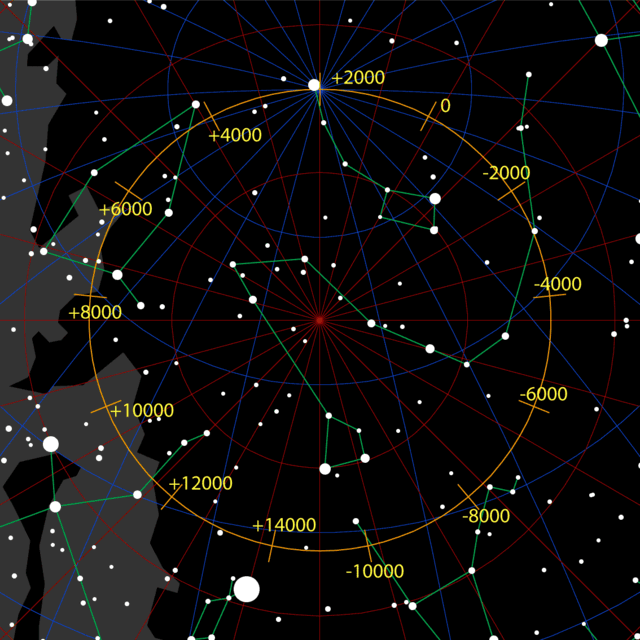Top Qs
Timeline
Chat
Perspective
Iota Herculis
Star in the constellation Hercules From Wikipedia, the free encyclopedia
Remove ads
Iota Herculis (ι Herculis, ι Her) is a fourth-magnitude binary star in the constellation Hercules, 139 parsecs (450 light-years) away. The brightest is a β Cephei variable, a pulsating star.
Remove ads
Visibility

Iota Herculis is dim enough that in cities with a lot of light pollution it is unlikely to be visible with the naked eye. In rural areas it will usually be visible, and for much of the Northern Hemisphere the star is circumpolar and visible year around.
Pole star
As a visible star, the proximity of Iota Herculis to the precessional path the Earth's North Pole traces across the celestial sphere makes it a pole star, a title currently held by Polaris. In 10,000 BCE it was the pole star, and in the future it will be again. While Polaris is only 0.5° off the precessional path Iota Herculis is 4° off.
Remove ads
Properties
Summarize
Perspective
Iota Herculis is a spectroscopic binary having an orbital period of 111.5 days and a semi-major axis of at least 0.0590 au. The orbit is somewhat eccentric, at e = 0.53. Nothing is known about the companion.[5]

The primary component is a B-type subgiant star that is at the end of its hydrogen fusion stage.[13] With a stellar classification B3IV,[1] it is considerably larger than the Sun, having a mass that is 5.4 times solar[5] and a radius 4.7 times. Though its apparent magnitude is only 3.80, it is 2,500 times more luminous than the Sun, yielding an absolute magnitude of −2.11, brighter in fact than most of the hot B stars in the Pleiades open star cluster. The Hipparcos satellite mission estimated its distance at roughly 152 parsecs (pc) from Earth, or 496 light-years (ly) away;[14] an updated parallax measurement from Floor van Leeuwen in 2007, however, puts the distance at 455 ly with a much tighter error factor of only 8 ly.[6]
A companion at a separation of about 30 au from Iota Herculis has been reported at the Washington Double Star Catalog, but it has been observed only once and is considered unconfirmed.[5] Another star has been identified with a common proper motion at an angular separation of 116 arcseconds and a visual magnitude of 12.1.[15] This would place it approximately 18,000 AU away, giving it an orbit of about 1 million years.[13] However, measurements by the Gaia spacecraft found it to be much farther away than Iota, and thus is not a member of the system.[5]
Remove ads
Etymology
In Chinese, 天棓 (Tiān Bàng), meaning Celestial Flail, refers to an asterism consisting of ι Herculis, ξ Draconis, ν Draconis, β Draconis and γ Draconis.[16] Consequently, ι Herculis itself is known as 天棓五 (Tiān Bàng wu, English: the Fifth Star of Celestial Flail).
References
External links
Wikiwand - on
Seamless Wikipedia browsing. On steroids.
Remove ads

